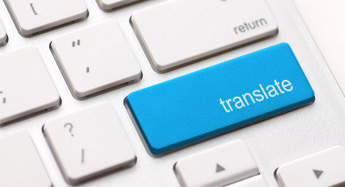Languages in the Unitary Patent
Language is a sensitive issue for different kinds of reasons. First, all countries tend to favour their own language since it is an essential element of their culture. There is therefore a subjective element of national pride which plays a role.
Second, there is an objective element which relates to costs. Translation means additional costs which may be substantial. Although there are technical means to get free machine translations, for the time being machine translation is not always reliable and it is not available for all languages.1
The rules about languages are mainly those set out in Council Regulation (EU) No. 1260/2012 of 17 December 2012 implementing enhanced cooperation in the area of the creation of unitary patent protection with regard to the applicable translation arrangements. Additionally, the rules about the language of proceedings are set out in the Agreement on a Unified Patent Court.
The language issue arises at two levels, patent prosecution and litigation.
Prosecution
Current rules applicable to European patents
A patent application can be filed in any language of the Member States but there are only three languages that are the "official languages" of the EPO: English, French and German. If the patent application is not filed in one of the three official languages, the applicant must provide a translation into one of the official languages which becomes the "language of the proceedings."2
 New rules
New rules
The above rules will remain applicable and "no further translations shall be required."3
The new compensation scheme
Once the patent has been published, for those applicants who file patent applications in their own languages which are not one of the three official languages, they will be compensated for translation costs.
This compensation will benefit:
- SMEs (small and medium-sized enterprises);
- Natural persons;
- Non-profit making organisations; and
- Universities & public research organisations residing in a Member State.4
The transitional period
The goal is to have efficient tools for machine translation to and from all languages of the Member States but this is not yet the case.
There will therefore be a transitional period until a Committee decides that high quality tools are available. This transitional period will not last less than six years and not more than 12 years.
During the transitional period, English will prevail because, as the Regulation puts it in paragraph 12 of the preamble, English "is the language customarily used in the field of international technological research and publications".
There will always be at least an English version. There will be two situations:
- If the language of the proceedings before the EPO is French or German, the applicant will have to provide a translation in English; and
- If the language of the proceedings before the EPO is English, the applicant must provide a translation in any official language of the Union.5
There is no indication about what the rules will be after the transitional period. However, it is expected that with machine translation, all patents will be available in all languages of the Member States.
Litigation
Translation of patent
There are circumstances in which the patent owner can be requested to provide translations. The court can request the patent owner to provide a translation of the patent into the language used in the proceedings of that court.6 The purpose here is to make sure that the judges have a clear understanding of the patent. Additionally, in a patent infringement suit the defendant can ask the patent owner to provide a translation of the patent into an official language of either:
- the Member State in which the alleged infringement took place; or
- the Member State in which the defendant is domiciled.7
 A new defence available to potential infringers?
A new defence available to potential infringers?
If the court finds there has been an infringement, when the court decides on the amount of damages, they must "take into consideration, [in particular where the alleged infringer is a SME, a natural person or a non-profit making organization, a university or a public research organization] whether the [defendant] acted without knowing or without reasonable grounds for knowing, that he was infringing that patent … before having been provided with the translation referred to above."8 There is a "good faith" element that will be taken into consideration.
Language of proceedings
The language of proceedings differs according to the seniority of court and the division in which the case is being heard.
Before the Court of First Instance
As a general rule, before local and regional divisions, the language of the proceedings is the language of the Member State where the division sits. However,
- the Member State can decide otherwise;
- the judges can choose the language of the patent with the agreement of the parties; and
- the parties can decide otherwise with judges' approval.
Before the Central Division the language of proceedings will be the language of the patent.
Before the Court of Appeal
The language of the proceedings will be the same as the language that was used before the Court of First Instance. However, the parties may jointly decide that it will be the language of the patent.9
As a conclusion, it is fair to say that whereas in the current European Patent system the three official languages are treated equally, the new rules will favour English speaking users during the prosecution stage but also at the litigation stage since the language of the patent can subsequently become the language of the proceedings.
If you have any questions on this article or would like to propose a subject to be addressed by Synapse please contact us.
1 Currently the Patent Translate service that has been developed by the EPO with Google provides translations between English and 31 languages and between French and German and 27 languages.
2 Article 14 of the Convention on the Grant of European Patents (European Patent Convention) of 5 October 1973 as revised in 1991 and 2000.
3 Article 3.1 of Council Regulation (EU) No. 1260/2012.
4 Article 5 of Council Regulation (EU) No. 1260/2012.
5 Article 6.1 of Council Regulation (EU) No. 1260/2012.
6 Article 4.2 of Council Regulation (EU) No. 1260/2012.
7 Article 4.1 of Council Regulation (EU) No. 1260/2012.
8 Article 4.4 of Council Regulation (EU) No. 1260/2012.
9 Articles 49 and 50 of the Agreement on a Unified Patent Court.



